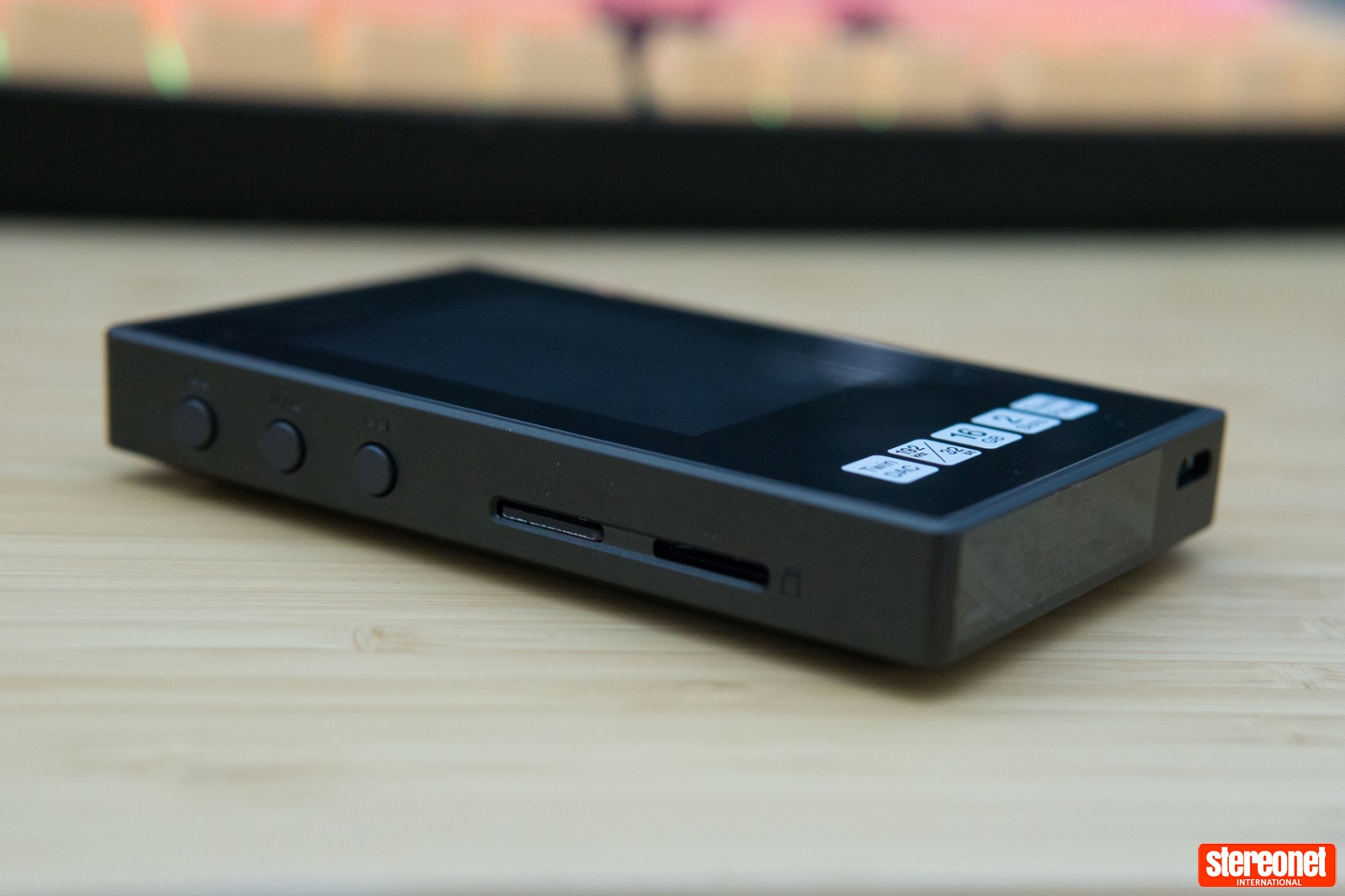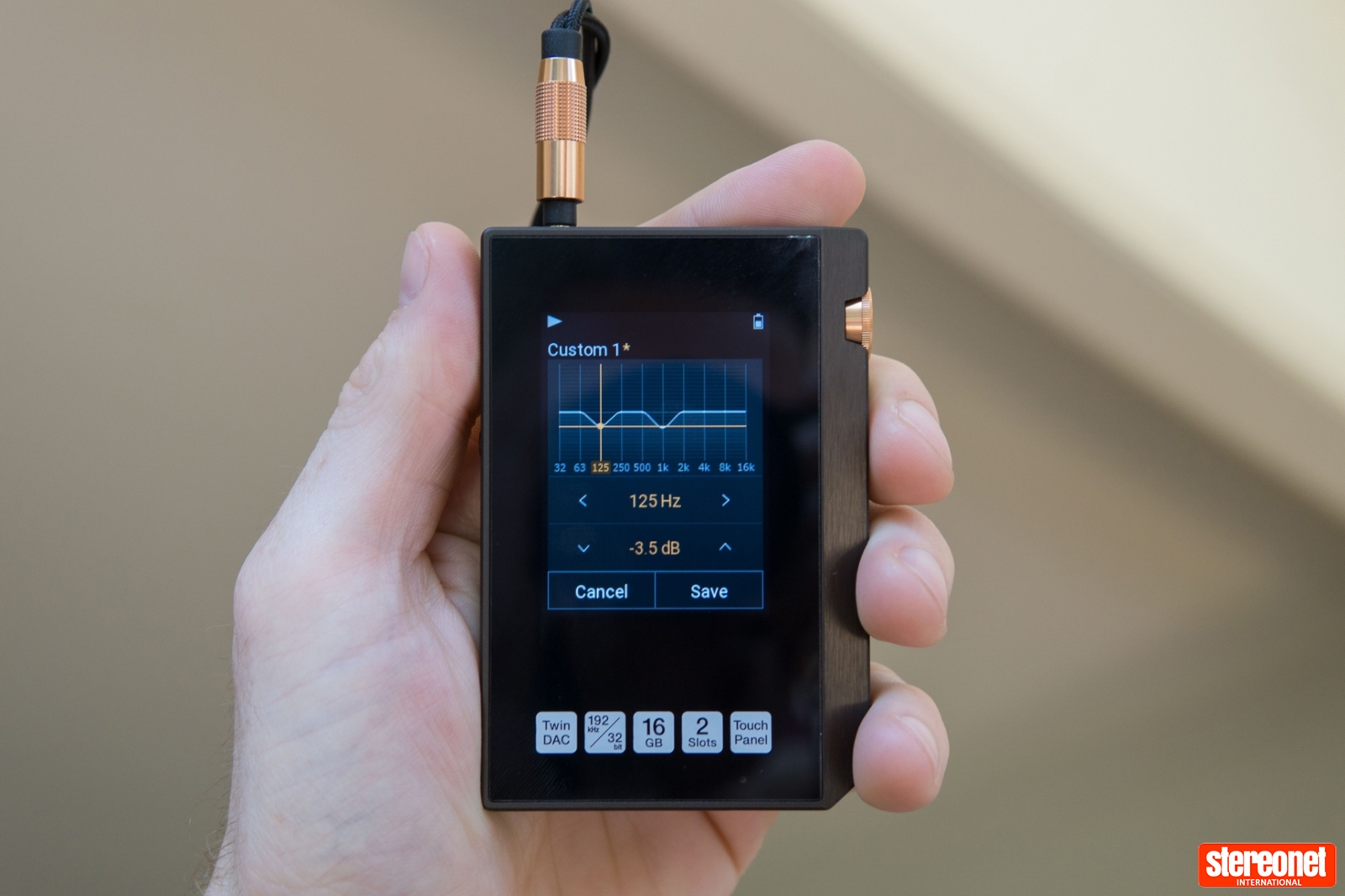REVIEW: PIONEER XDP-30R DIGITAL AUDIO PLAYER

With some unique features, sleek aesthetics and a more affordable price than many of the competitors, Pioneer are shaking the digital audio player market up with the XDP-30R.
Click below to open the StereoNET Digital Magazine review, otherwise read on.
Pioneer
XDP-30R
Digital Audio Player
It’s getting increasingly fierce out there in the portable Digital Audio Player (DAP) market.
With Astell&Kern recently releasing the new KANN DAP ($1349 RRP), and FiiO pumping out the new X7-II flagship DAP ($869 RRP), there is no shortage of high-end releases to satisfy even the most feature-hungry audiophiles.
Pioneer is no stranger to this war either, with the Twin DAC XDP-100R and the battle-hardened XDP-300R.
But what about those of us who don’t want to go all out with the budget? Must we succumb to a stripped down, featureless and dull player?
Fortunately, Pioneer doesn’t seem to think so, and they’re arguably shaking things up in the market with their new Pioneer XDP-30R DAP. While it doesn’t boast the same features that some of its fellow flagships do, it does have some features that are unique to the line-up, and some sleek aesthetics to boot.
Coming in with an RRP of $799, its main competitors are the Fiio X7 II ($869 RRP), the A&K AK70 MKII ($899 RRP).
Marketed as “Pioneer Private” in Japan, it was also released as an Onkyo DP-S1 Rubato, which isn’t available in Australia.

Hardware
Pioneer’s XDP-30R sports a sleek aluminium frame with a plastic rear cover.
From a distance, it’s quite easy to see the physical similarities between the XDP-30R, and its flagship parents. With a polished metal border, a notched volume wheel on the side, and dual Micro SD card slots, it’s almost as if the XDP-100R and XDP-300R had a cute little baby.
That is where the familiar feelings end, however. The XDP-30R has a considerably smaller body to screen ratio, a much smaller form factor, and is a much more pocket-friendly package.
Under the hood, there is some gnarly audio prowess being displayed in this little pocket rocket. For starters, on DAC duty are two SABRE ES9018C2M chips, being fed into two SABRE ESS9601K amplifiers, with each channel sharing its own individual circuit path and capacitors.

Each of those amplifiers is driving the output options: a standard 3.5mm jack, and a fully balanced 2.5mm jack. Each of these can also be used as a lineout.
For wireless connectivity, there is Wi-Fi and Bluetooth – which uses A2DP with an SBC Codec.
The screen is a 2.4” display, with a resolution of 320 x 240. The screen seemed fine for the purpose but is a little on the small side. The interface makes up for this neatly, but I experienced some jarring screen-tearing when scrolling. Hopefully, a future firmware update fixes this.
There are the usual playback buttons dotted along the side, as well as a unique lock switch which worked incredibly well when I was out and about on Melbourne streets with this player in my pocket.

Interface
Pioneer has had incredible success in their vehicle entertainment pursuits, and that prowess shows here. The UI of the XDP-30R is insanely intuitive. Every software button is huge, every function is obvious, and for the entirety of the review period, it rarely ever crashed or locked up.
I’m personally accustomed to Android being the OS backbone of DAPs, and initially, I was disappointed that it wasn’t present here. However, I’m now very confident that all the extra bells and whistles of Android aren’t necessary here. The entire UI is a serious, no-fuss and no-frills audiophile experience.
Despite not running a traditional operating system, it still allows for TuneIn online streaming services. Apparently, Tidal is being added in a later update, along with other potential streaming services.

If you absolutely can’t stand the simplicity of the UI, you can control the DAP over Bluetooth using the companion app. The functionality of this app is very basic – simple music controls (play/pause, track skipping, and volume adjustments) are the only available options. I would have loved to see some form of a streaming option here though. If it was available, it would mean that the XDP-30R would be rubbing shoulders with portable powerhouses such as the Mojo/Poly combination from Chord Electronics.
For the most part, the smaller display doesn’t cause too many issues when selecting menu options.
However, I ran into some issues when selecting tracks. Due to not having a vast amount of screen real estate, longer file and song names wouldn’t be displayed in full. Longer file names are truncated and shortened. So, for example, I had an entire album of Angus and Julia Stone, and the entire choice of tracks was “01_Angus_And_Julia_St…” and so on. It makes for a challenging listening session when I don’t know what track I’m looking at. Hopefully, this is addressed in a future update.

Fortunately, the XDP-30R is said to be receiving an update which makes it happy to talk to external DACs in the future. However, with a seemingly undocumented method, this is already possible: turning the player off, plugging it into your DAC, then switching it back on.
This makes for a very neat little standalone package for listening to audio on the go. Despite my best efforts though, I couldn’t seem to get this to work with my Chord Mojo.
Battery life is rated at a healthy fifteen hours on the packaging, however with Wi-Fi and Bluetooth in use; I was struggling to make it up to ten.
The only real issue I had with this player was that it refused to accept any of my .M3U playlists. Instead, it would crash the player and would require not only a reset but also the removal and reinsertion of the Micro SD card.

Sound
The XDP-30R is capable of an entire swag of playback options, including DSD (5.6 MHz/2.8 MHz), DSD-IFF, FLAC, ALAC, WAV, AIFF, MP3, and AAC (Maximum 192 kHz/32-bit) with MQA capability reported as coming in a future update.
It also features some advanced tuning capabilities, including a respectable 10-band EQ, five levels of bass boost, up-sampling options, and digital filter adjustments. All of this can be adjusted on-the-fly while listening to music.
For those who venture into the balanced domain, Pioneer provides the option between ACL (Active Control Ground) and BTL (Bridge-Tied Load) modes. Technical details on these modes proved to be scarce. However, Pioneer say that:
Formerly the domain of desktop headphone setups, balanced output is set free by a 2.5 mm (3/32˝) 4-pole jack. You can choose BTL, which boosts driving power, or ACG, a stable mode that results in taut and clearly defined low-frequency sound. ACG enhances overall clarity and spatial dimensionality. Balanced output eliminates crosstalk and improves stereo separation.
When using the Pioneer SE-Monitor 5 headphones with the balanced cable, the differences between the two modes were subtle but present. Switching between the two modes is a simple option on the main menu screen, and can be done instantaneously to compare them easily.

ACG mode had a slightly cooler tone, with forward and pronounced midrange – great for vocal and acoustic tracks. The bass sits back in the mix, and the listening experience becomes a little livelier, giving more of a “concert” type feel.
BTL mode seems to have slightly higher gain and is comparatively flat in frequency response. The response was far more neutral and uncoloured. This mode sounds much more like a traditional balanced output.
When using the unbalanced Unique Melody Merlin (Custom IEM), the Pioneer XDP-30R indeed played its strong hand. Even with very sensitive IEMs, there was no hiss, no output impedance issues causing distortion, and there was plenty of volume headroom available.
Despite only needing around 30% of the available volume on “low-gain” mode to achieve decent volume, there are still plenty of steps to play with to dial in the exact volume required.
Bass reproduction is deep and punchy, with absolutely no roll off detected. It’s a similar story across the spectrum – no colouration, no distortion, and absolutely plenty of detail available.
Even with a fussy, sensitive IEM, the XDP put on a stellar performance.

But things took a slightly different turn when I tried out the Sennheiser HD800S in unbalanced mode.
The XDP-30R put up an excellent fight and could push the 56mm drivers to acceptable volume levels. However, it was just unable to compete with desktop amplification when it came to full-range frequency response, and the sound seems to lack body on either end of the spectrum.

Conclusion
While there are a few bugs that should easily be addressed in future firmware updates and a few features the head-fi community is still patiently holding out for, this player is still a great option.
If you’re not a fan of Android, or perhaps you aren’t quite ready to splash out and consider Pioneer’s flagship offerings, the XDP-30R offers high-performance at a much more wallet-friendly price.
For more information visit Pioneer.
Matthew Jens
Constantly keeping himself busy, Matthew is a production manager, Brazilian jiu-jitsu blue belt, Head-Fi fanatic, coffee enthusiast and all-round cool Dad.
Posted in:Headphones
Tags: pioneer powermove
JOIN IN THE DISCUSSION
Want to share your opinion or get advice from other enthusiasts? Then head into the Message Forums where thousands of other enthusiasts are communicating on a daily basis.
CLICK HERE FOR FREE MEMBERSHIP
applause awards
Each time StereoNET reviews a product, it is considered for an Applause Award. Winning one marks it out as a design of great quality and distinction – a special product in its class, on the grounds of either performance, value for money, or usually both.
Applause Awards are personally issued by StereoNET’s global Editor-in-Chief, David Price – who has over three decades of experience reviewing hi-fi products at the highest level – after consulting with our senior editorial team. They are not automatically given with all reviews, nor can manufacturers purchase them.
The StereoNET editorial team includes some of the world’s most experienced and respected hi-fi journalists with a vast wealth of knowledge. Some have edited popular English language hi-fi magazines, and others have been senior contributors to famous audio journals stretching back to the late 1970s. And we also employ professional IT and home theatre specialists who work at the cutting edge of today’s technology.
We believe that no other online hi-fi and home cinema resource offers such expert knowledge, so when StereoNET gives an Applause Award, it is a trustworthy hallmark of quality. Receiving such an award is the prerequisite to becoming eligible for our annual Product of the Year awards, awarded only to the finest designs in their respective categories. Buyers of hi-fi, home cinema, and headphones can be sure that a StereoNET Applause Award winner is worthy of your most serious attention.


















